
Forming, storming, norming & performing how a team develops Culture shock, Development
He called the stages: forming, storming, norming, performing, and adjourning. Team progress through the stages is shown in the following diagram. Most high-performing teams go through five stages of team development. The forming stage involves a period of orientation and getting acquainted.
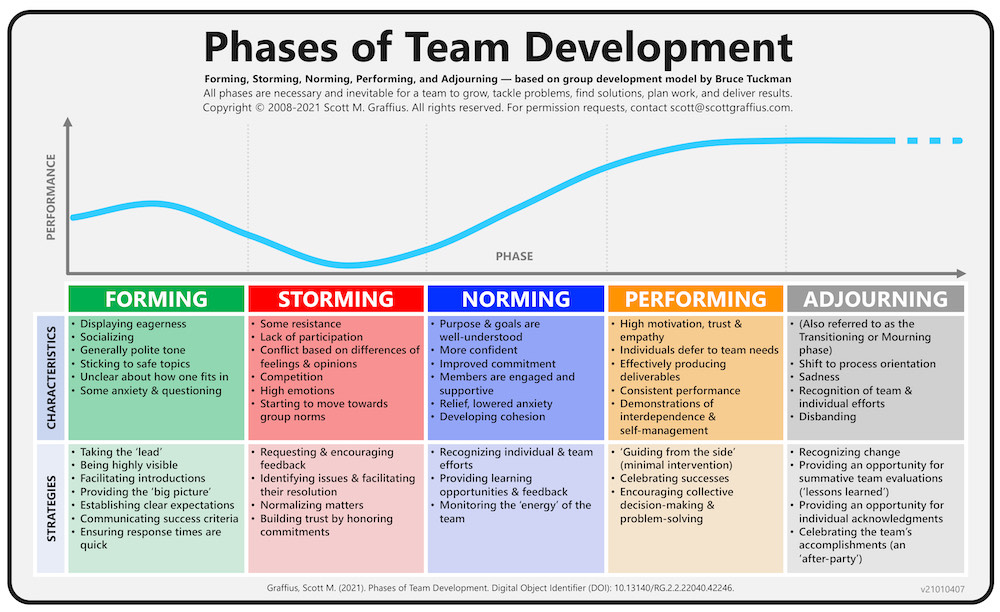
Forming Storming Norming Performing and Adjourning for Agile Teams Blog
These stages are commonly known as: Forming, Storming, Norming, Performing, and Adjourning. Tuckman's model explains that as the team develops maturity and ability, relationships establish, and leadership style changes to more collaborative or shared leadership.. A group might be happily Norming or Performing, but a new member might force.
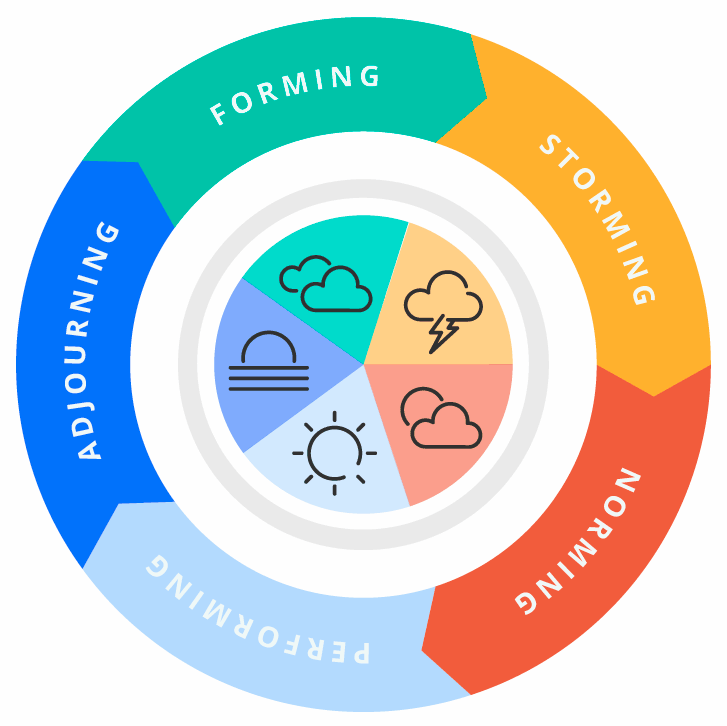
Forming Storming Norming Performing Event Square
Leading Through the Forming, Storming, Norming, and Performing Stages Forming to Storming. To establish clear objectives for the group at this first stage, create a team charter. And help team members to set personal goals so that they can see how their work will fit with the bigger picture. The forming stage is also about people getting to.
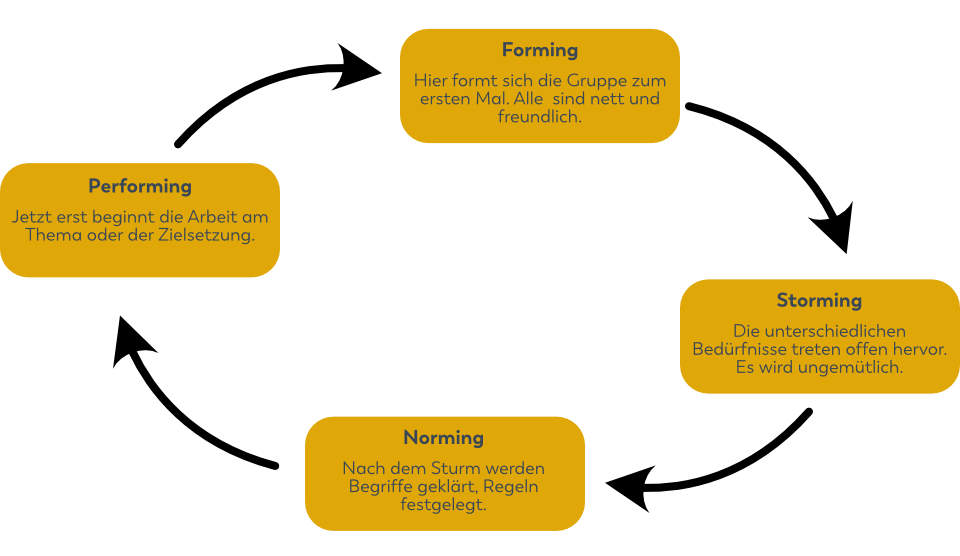
Forming, Storming, Norming, Performing, Gruppenphasen nach Tuckman
Psychologist Bruce Tuckman came up with the memorable phrase "forming, storming, norming, and performing" in his 1965 paper, "Developmental Sequence in Small Groups." [1] It describes the path that teams follow on their way to high performance. Later, he added a fifth stage, "adjourning" (also known as "mourning") to mark the end of a team's.

Forming Storming Norming Performing A Guide to Effective Team Development
According to Tuckman, all phases—Forming, Storming, Norming, Performing, and Adjourning—are necessary for teams to grow, tackle problems, find solutions, plan work, and deliver results. Scott.

Forming Storming Norming Performing Team development, Group dynamics, Change management
The concept involves four stages: forming, storming, norming, and performing. According to Tuckman, these stages are necessary for teams to learn how to work together. In 1977, Tuckman added a fifth stage, adjourning (also known as mourning), which marks project completion. Each stage comes with unique feelings, challenges, behaviors, and.
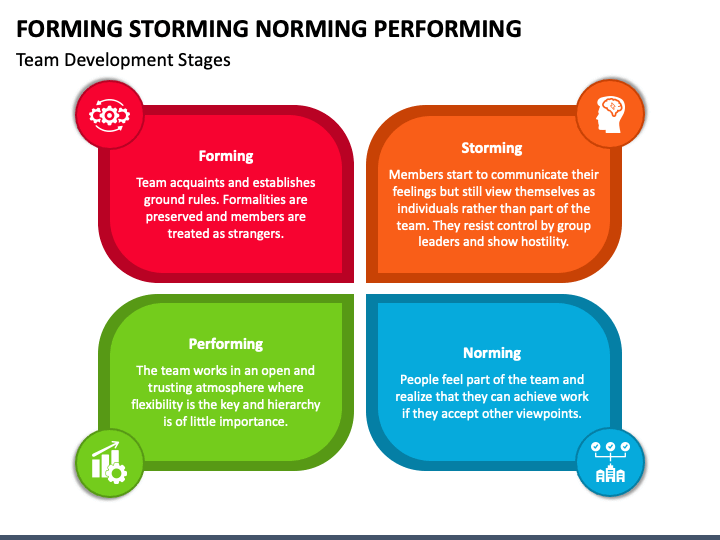
Forming Storming Norming Performing PowerPoint Template PPT Slides
The forming-storming-norming-performing model of group development was first proposed by Bruce Tuckman in 1965, who said that these phases are all necessary and inevitable in order for a team to grow, face up to challenges, tackle problems, find solutions, plan work, and deliver results.Tuckman suggested that these inevitable phases were critical to team growth and development: he.

Managing Cultures Week 13 Forming, Storming, Norming, Performing, Adjourning
Bruce Tuckman's Forming, Storming, Norming, and Performing model describe these stages. When you understand it, you can help your new team become effective more quickly. About the Model

Forming, Storming, Norming, and Performing Tuckman Model
Net als mensen doorlopen ook groepen een ontwikkeling. Bruce Tuckman heeft deze groepsontwikkeling gevat in vier stadia: forming, storming, norming en performing. Een zeer inzichtelijk model om de ontwikkeling van de groep tastbaar te maken. Door Peter Fijbes Volgens het model van Tuckman gaat een groep verschillende stadia door, die elk zijn eigen kenmerken heeft. Echter, niet elke Lees meer.

Team Development Forming Storming Norming Performing vrogue.co
November 19, 2021. Psychologist researcher Bruce Tuckman formed Tuckman's Model as part of his 1965 paper Developmental Sequence in Small Groups. The US Navy tasked him, along with a group of other social psychologists, with analysing the dynamics of forming a team, and how the leadership style changes as the group develops.
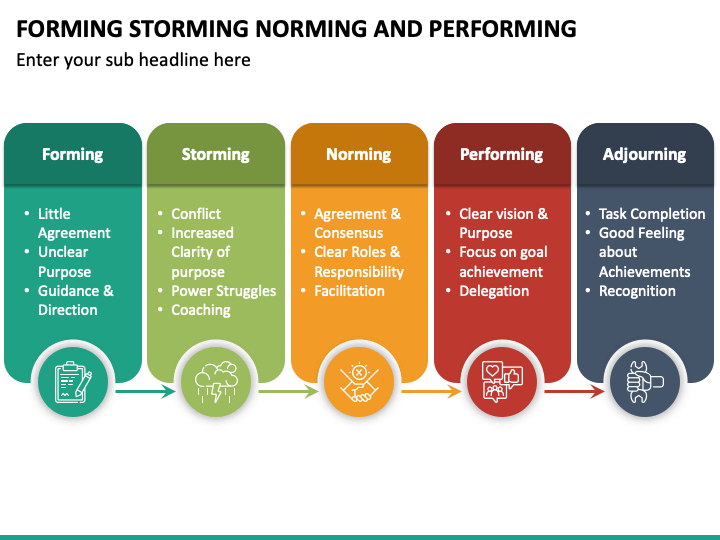
Forming Storming Norming Performing Adjourning Diagram
The performing stage is what every marketing team leader dreams of: smooth delegation of tasks, efficient execution of individual responsibilities, optimized workflows that play to each team members' strengths. This is the stage in which innovation can occur. But you can't get there without going through the forming-storming-norming stages.

FormingStormingNormingPerforming
The forming → storming → norming → performing model of group development was first proposed by psychological researcher Bruce Tuckman in 1965. His theory, known as " Tuckman's stages of group development " stated that all of these phases are necessary and inevitable in order for a team to grow, face up to challenges, tackle problems.

A Lean Journey The Stages of High Performance Teams
The 5 stages of the Tuckman Ladder Model. The model describes teams' four stages as they work together: forming, storming, norming, and performing. Each stage has its challenges and opportunities, and teams must overcome these challenges to reach the next stage of a project by working together more effectively. 1. Forming.
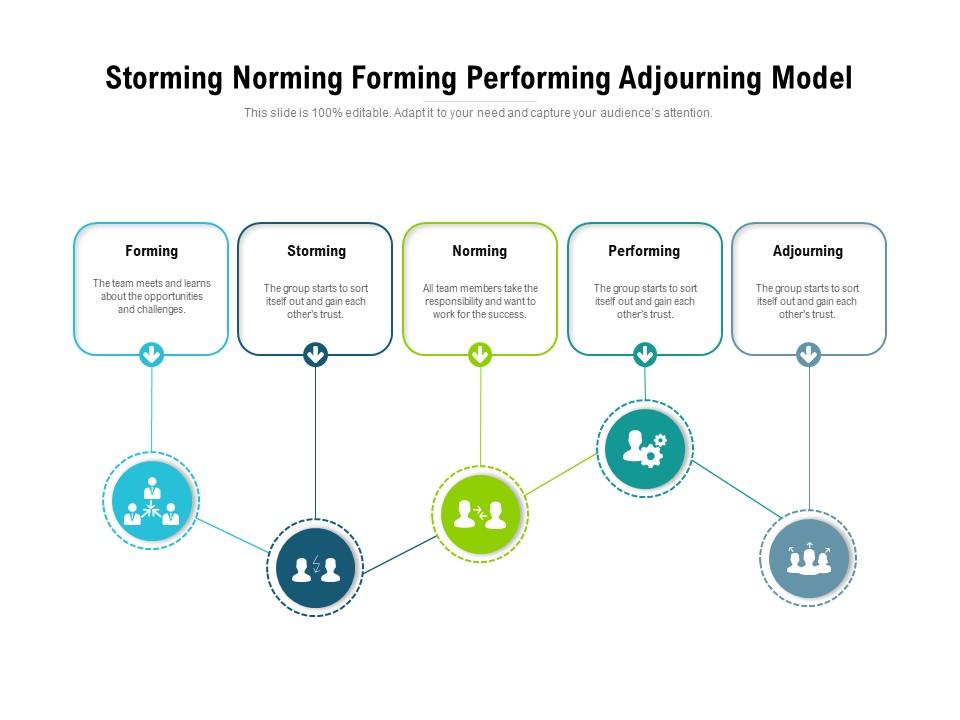
Storming Norming Forming Performing Adjourning Model PowerPoint Presentation Slides PPT
Drawing on observations of various groups, Tuckman posited that all teams go through a series of predictable stages — forming, storming, norming, and performing. He later added a fifth stage, 'adjourning' (or 'mourning'), to address the end phase of a team's life cycle. Storm, form, norm, perform: A quick overview

Forming Storming Norming Performing PowerPoint and Google Slides Template PPT Slides
Forming, Storming, Norming and Performing is a model that describes the development of groups and explains how they gradually become more efficient. Psychologist Bruce Tuckman coined the term in his 1965 article "Developmental Sequence in Small Groups" and uses four stages to indicate what type of behavior you can expect from team members over.

Forming, storming, norming, performing (v3)
Stage 1: Forming. In the first stage of the Forming, Storming, Norming and Performing model is Forming. This stage is when team members come together and are focused on learning about each other, understanding the rules of the group and being accepted by the group. In this stage, individuals are on their best behavior and striving to learn.